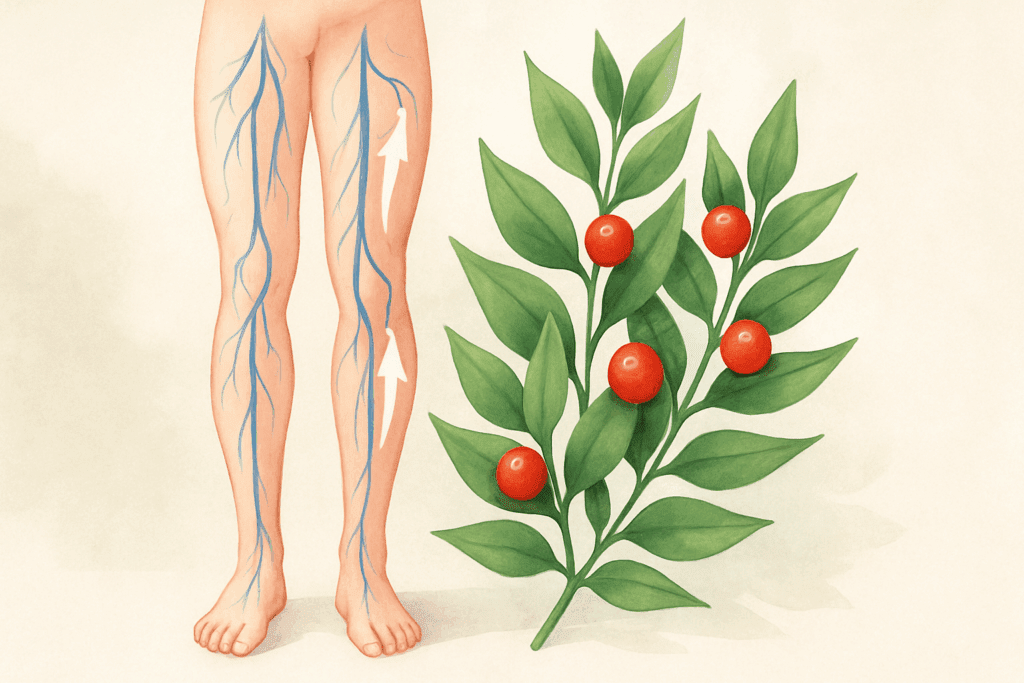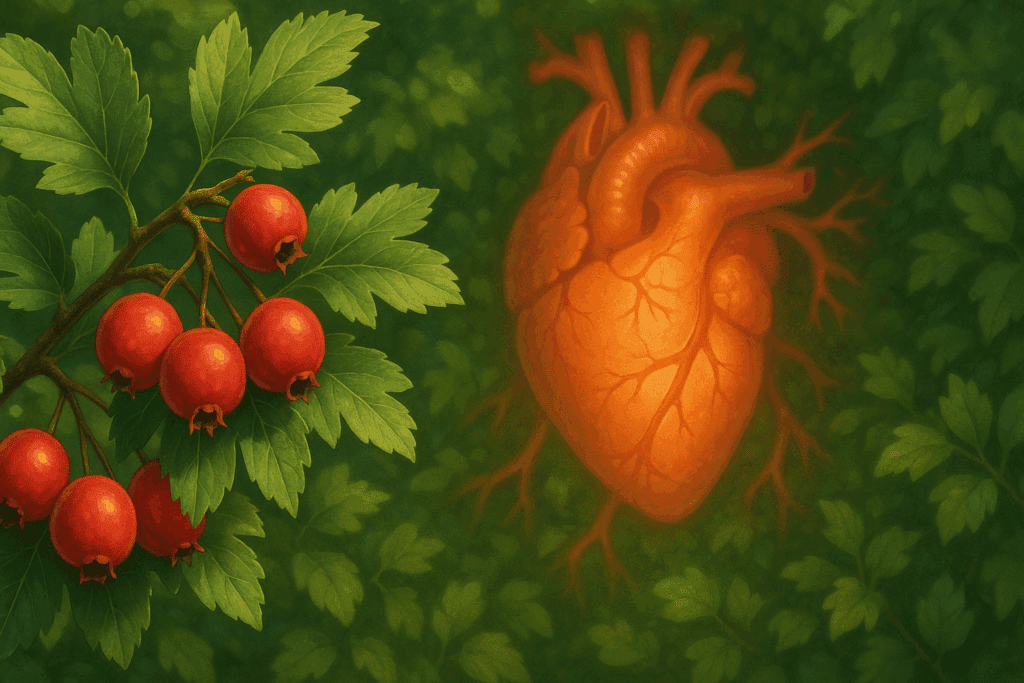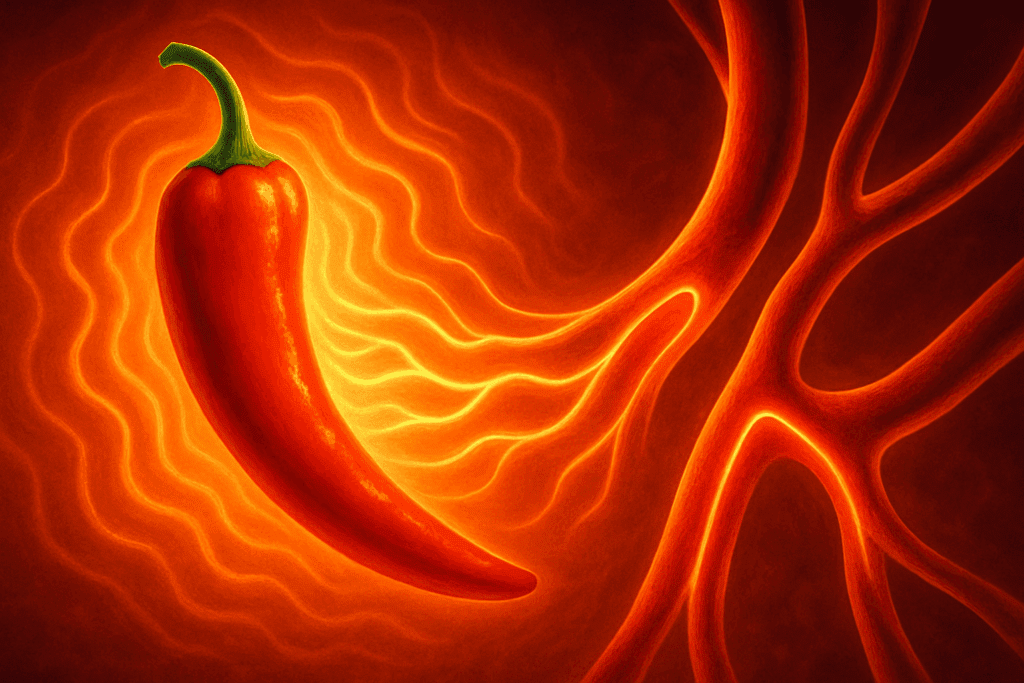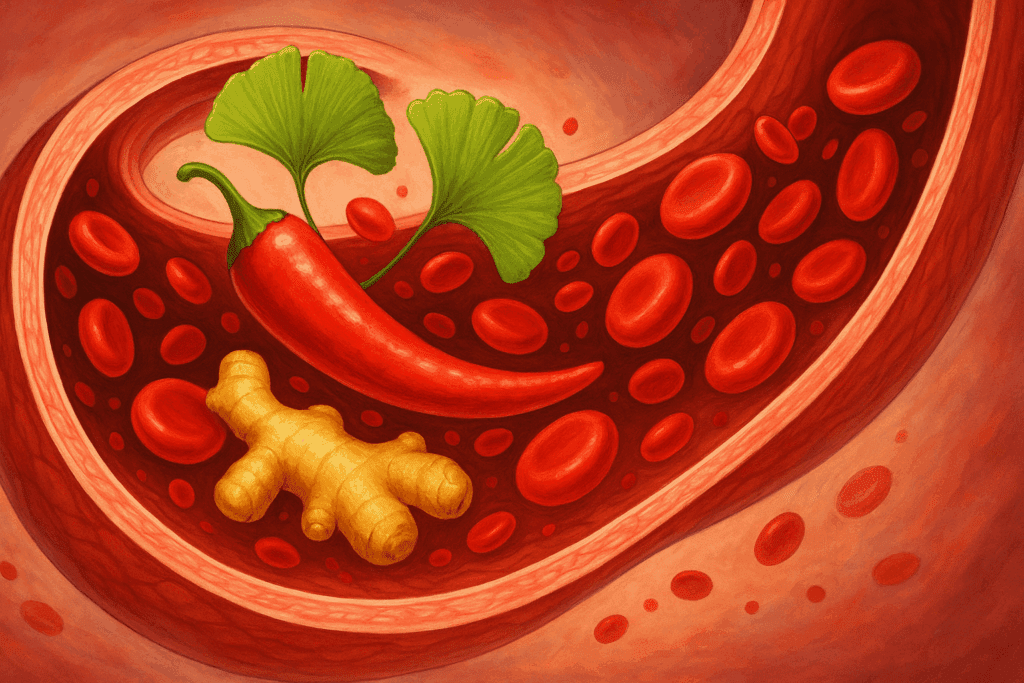Understanding the Importance of Healthy Circulation
Good circulation is one of the cornerstones of human health, yet it is often overlooked until issues arise. The circulatory system is responsible for transporting oxygen, nutrients, and hormones to every cell in the body while also aiding in the removal of metabolic waste. When circulation falters, symptoms like cold extremities, fatigue, varicose veins, and even cognitive decline can occur. Addressing circulation proactively through diet, lifestyle, and natural therapies is crucial for maintaining vitality and preventing more serious conditions such as hypertension, peripheral artery disease, and deep vein thrombosis. Exploring natural ways to improve circulation, particularly through the use of herbs for circulation, offers a promising, evidence-based approach to enhancing overall well-being without the risks often associated with pharmaceutical interventions.
You may also like: Where to Buy Bacopa Monnieri: How to Find Quality Supplements for Cognitive and Memory Support
In recent years, interest has surged in the use of herbs for blood circulation as part of an integrated strategy for cardiovascular support. Researchers and traditional medicine practitioners alike have highlighted how certain botanicals can help optimize blood flow, reduce inflammation, and promote vascular elasticity. These herbs that promote blood flow are not only rooted in ancient practices but are increasingly validated by modern science. Understanding how specific herbs to improve circulation work can empower individuals to take a more proactive role in their health. As we explore these natural allies, it becomes clear that herbal remedies for poor blood circulation can offer a safe, effective, and holistic path to better health.

How Herbs Support Circulatory Health
Herbs that improve blood circulation work through several complementary mechanisms. Some, like ginkgo biloba and cayenne pepper, enhance vasodilation, helping blood vessels to widen and facilitate smoother blood flow. Others act as natural anticoagulants, reducing the risk of clot formation without the side effects associated with synthetic blood thinners. Anti-inflammatory herbs can reduce vascular inflammation, a key contributor to arterial stiffness and poor blood flow. Antioxidant-rich herbs for better circulation also help by neutralizing free radicals that damage blood vessels, thus preserving vascular integrity over time.
Another critical aspect is the ability of herbs to modulate nitric oxide production. Nitric oxide is a molecule that signals the blood vessels to relax, thereby improving circulation and lowering blood pressure. Herbs that promote circulation often enhance the body’s natural production of this vital compound. Additionally, some herbs for blood flow support microcirculation, ensuring that even the smallest capillaries receive an adequate supply of nutrients and oxygen. By using herbs for good blood circulation consistently and knowledgeably, individuals can significantly enhance their cardiovascular resilience and overall physiological performance.

Ginkgo Biloba: A Time-Tested Circulatory Tonic
Ginkgo biloba is one of the most well-researched herbs for circulation. Derived from one of the oldest tree species on earth, ginkgo leaves are rich in flavonoids and terpenoids—powerful antioxidants known to improve blood flow. Clinical studies have shown that ginkgo can enhance cerebral circulation, making it particularly valuable for cognitive health, memory enhancement, and mental clarity. Its ability to help blood flow to the brain is one reason it is frequently recommended for individuals experiencing age-related cognitive decline.
In addition to its cognitive benefits, ginkgo biloba is recognized for its ability to promote peripheral circulation. Individuals suffering from conditions like Raynaud’s phenomenon, in which extremities become painfully cold, often find relief through ginkgo supplementation. The herb’s ability to promote vascular relaxation and enhance blood flow underscores why it is frequently cited among the best herbs for blood circulation. However, individuals on anticoagulant therapy should use ginkgo cautiously and under medical supervision to avoid excessive bleeding risks.
Cayenne Pepper: Igniting Circulatory Power Naturally
Cayenne pepper, derived from the fruit of Capsicum annuum, has been revered as one of the most potent herbs to increase blood circulation. Its active compound, capsaicin, stimulates vasodilation by promoting the release of nitric oxide and other vasodilatory agents. This expansion of blood vessels allows for greater blood flow throughout the body, making cayenne an excellent option for those seeking circulation help naturally.
Beyond its role in improving circulation, cayenne pepper also exhibits remarkable anti-inflammatory and analgesic properties. It has been used traditionally to alleviate joint pain, muscle soreness, and even headaches—conditions often linked to poor circulation. Including cayenne in the diet, whether through culinary use or supplementation, can significantly enhance systemic blood flow. For individuals dealing with cold hands and feet, herbs like cayenne offer a natural way to help with blood circulation without resorting to synthetic medications.

Hawthorn Berry: The Heart’s Herbal Ally
Hawthorn berry, known scientifically as Crataegus spp., has a long history of use in traditional European medicine as a cardiovascular tonic. Modern research supports its use for strengthening heart function, improving arterial blood flow, and enhancing overall vascular health. Hawthorn is packed with oligomeric proanthocyanidins and flavonoids, which possess potent antioxidant activity. These compounds protect blood vessels from oxidative stress and inflammation, both of which can impair circulation over time.
One of the most notable aspects of hawthorn is its ability to improve the force of heart contractions without increasing the heart rate. This makes it uniquely effective among herbs for better blood circulation, especially for individuals managing mild forms of heart failure or hypertension. Regular use of hawthorn can lead to significant improvements in symptoms such as fatigue, shortness of breath, and exercise intolerance. As such, hawthorn remains a central figure among herbal remedies for poor blood circulation.
Ginger Root: A Warm and Stimulating Circulatory Aid
Ginger root (Zingiber officinale) is renowned not only for its culinary uses but also for its impressive medicinal properties. Among herbs good for circulation, ginger stands out for its warming effect on the body, which can help stimulate blood flow. It acts by mildly dilating blood vessels and reducing platelet aggregation, which can decrease the risk of clot formation and ensure smoother circulation.
Additionally, ginger’s powerful anti-inflammatory properties contribute to its circulatory benefits. Chronic inflammation can impair blood vessel function, leading to poor circulation and increased cardiovascular risk. By counteracting inflammatory processes, ginger helps maintain vascular elasticity and resilience. Its versatility makes it easy to incorporate into the daily diet through teas, smoothies, or meals, providing an accessible and enjoyable way to harness natural ways to improve circulation.

Butcher’s Broom: Specialized Support for Legs and Veins
Butcher’s broom (Ruscus aculeatus) is particularly esteemed among herbs for circulation in legs. Its active compounds, known as ruscogenins, have been shown to constrict blood vessels slightly, thereby improving venous tone and promoting better blood return from the legs to the heart. This action makes butcher’s broom especially beneficial for those suffering from chronic venous insufficiency, varicose veins, and hemorrhoids.
Clinical studies have supported the use of butcher’s broom in reducing leg swelling, heaviness, and discomfort. These benefits highlight its value among herbal remedies for poor blood circulation, particularly when poor venous tone contributes to symptoms. Incorporating butcher’s broom, either as a standardized extract or in topical formulations, provides a focused natural medicine for blood circulation challenges in the lower extremities.
Horse Chestnut: Revitalizing Vein Health Naturally
Horse chestnut (Aesculus hippocastanum) seeds contain a powerful compound called aescin, which has been shown to strengthen vein walls, reduce inflammation, and support overall vascular integrity. It is particularly effective for addressing chronic venous insufficiency and is frequently recommended among herbs for blood circulation in legs.
By promoting better vein tone and reducing capillary permeability, horse chestnut extract helps decrease leg swelling, pain, and visible varicosities. It stands out among herbs to improve blood flow for its ability to target the venous system specifically. Topical creams and oral supplements containing standardized horse chestnut extract provide multiple routes of administration for individuals seeking natural ways to help circulation, particularly in the lower limbs.

Frequently Asked Questions (FAQ): Natural Strategies for Enhancing Blood Circulation
1. Can daily habits combined with herbs really improve blood circulation long-term?
Absolutely. While herbs for circulation provide valuable phytochemicals that support vascular health, their effects are significantly amplified when paired with good lifestyle habits. Staying physically active, managing stress, and eating a heart-healthy diet create an ideal environment where herbs that promote blood flow can work even more effectively. Many people overlook the cumulative benefits—small daily improvements often yield the best long-term results. Combining herbs good for circulation with mindfulness practices like yoga or tai chi also appears to enhance endothelial function, offering a holistic way to boost vascular resilience over decades.
2. How do herbs for blood circulation compare to pharmaceutical options for vascular health?
Herbal approaches often work through different biological pathways than synthetic drugs. While pharmaceuticals typically offer fast-acting symptom relief, herbs to increase blood circulation tend to provide gradual, system-wide support by addressing underlying inflammation and oxidative stress. For example, ginkgo biloba and hawthorn—both considered among the best herbs for blood circulation—improve microcirculation without the common side effects linked to blood thinners. However, it’s crucial to note that natural ways to improve circulation are best seen as complementary, not substitutes, for prescription treatments when medical conditions like deep vein thrombosis are involved. Always consult your healthcare provider before combining natural medicine for blood circulation with prescription therapies.
3. Are there any emerging herbal remedies showing promise for improving blood flow?
Yes, new research is uncovering exciting options! While classics like ginkgo and cayenne pepper remain favorites among herbs for better circulation, lesser-known botanicals like dan shen (Salvia miltiorrhiza) and gotu kola are gaining attention. Early studies suggest these herbs may stimulate angiogenesis—the formation of new blood vessels—an advanced benefit not often highlighted with traditional herbs that improve blood circulation. These developments open promising doors, especially for those seeking natural ways to help circulation after surgery or injury recovery. As always, more clinical trials are needed, but the future of herbal remedies for poor blood circulation looks bright.
4. Can herbs help with circulation issues specifically in the hands and feet?
Definitely. Many people searching for herbs for circulation in hands and feet experience symptoms like tingling or cold extremities due to sluggish microcirculation. Herbs like ginger, cinnamon, and butcher’s broom are particularly beneficial in these cases, as they target the smaller capillaries often missed by generalized therapies. When combined with topical balms infused with natural herbs for circulation, these plants can enhance localized blood flow. Especially in colder climates, herbs that help blood flow can be an essential part of maintaining comfort and dexterity during winter months.
5. What are some practical home remedies for poor blood circulation in feet?
In addition to taking herbs to improve blood circulation, simple home remedies can make a real difference. Warm foot soaks with Epsom salts, dry brushing, and elevating the legs above heart level are all effective natural ways to improve blood circulation in the feet. Massage oils infused with rosemary or peppermint—both excellent herbs for blood circulation in legs—can further enhance results. Alternating between hot and cold water immersion (contrast baths) is another great technique for stimulating venous return naturally. By combining herbs that promote circulation with these practices, individuals often report noticeable improvements in temperature regulation and foot comfort.
6. How do stress and emotional health impact blood circulation?
Interestingly, emotional states have a profound effect on vascular tone. Chronic stress elevates cortisol and adrenaline, leading to constricted blood vessels and impaired flow. Using herbs good for circulation like lemon balm, holy basil, and passionflower may not only support vascular health but also reduce stress-related endothelial dysfunction. Thus, stress management becomes a critical pillar alongside herbs to improve blood flow when aiming for full-spectrum circulation support. Implementing natural ways to help circulation through mind-body techniques like meditation, paired with circulation-enhancing herbs, offers a comprehensive approach rarely discussed in conventional treatments.
7. Are there specific herbs for circulation that are better suited for older adults?
Yes, certain herbs for better blood circulation are particularly effective for age-related circulatory challenges. Ginkgo biloba, horse chestnut, and hawthorn are widely recognized among geriatric specialists as some of the best herbs for circulation in aging populations. These herbs work gently but effectively, helping combat arterial stiffness and promoting cognitive function by improving blood flow to the brain. Additionally, herbs like turmeric, rich in anti-inflammatory compounds, are often included in protocols targeting natural ways to improve blood circulation in seniors. Choosing herbs that help circulation with antioxidant properties becomes even more vital as oxidative stress accumulates with age.
8. How quickly can someone expect results from using herbs to improve circulation?
Results can vary widely based on the individual and the severity of the issue. Some people report feeling warmer hands and feet within a week of using herbs for blood flow, while others may need consistent supplementation over two to three months. Remember, many herbs to increase circulation work gradually to rebuild vascular elasticity and integrity. It’s also important to support these herbs with overall lifestyle upgrades, such as improved hydration, exercise, and reduced smoking. For sustainable, long-term gains, patience and consistency are key when relying on natural ways to improve circulation.
9. What factors could diminish the effectiveness of herbs that promote blood flow?
Several common habits may counteract the benefits of herbs for blood circulation. A sedentary lifestyle, chronic dehydration, excessive caffeine intake, and poor dietary choices (like processed foods high in sodium) can all blunt progress. Additionally, skipping doses or using low-quality supplements undermines the full potential of herbs that promote circulation. Choosing reputable brands, staying active, and maintaining nutrient balance—especially magnesium and potassium—enhance the success of herbs to increase blood circulation. Always think of herbs as partners in a larger system of self-care rather than a standalone cure.
10. Could using herbs for circulation help athletic performance?
Yes, and this is a fascinating application! Athletes often seek natural ways to improve circulation to enhance endurance, speed recovery, and boost overall performance. Herbs like beetroot (for nitric oxide support), ginseng, and schisandra are particularly prized among runners and cyclists aiming to maximize oxygen delivery. Many sports nutritionists now incorporate herbs to improve blood flow into customized supplement stacks designed for peak cardiovascular function. While more scientific studies are needed, early evidence suggests that combining herbs for good blood circulation with training regimens can offer a natural, legal performance edge without the risks associated with synthetic stimulants.

Gotu Kola: Bridging Traditional Wisdom and Modern Science
Gotu kola (Centella asiatica) is a staple in traditional Ayurvedic and Chinese medicine, praised for its capacity to support wound healing, cognitive function, and vascular health. Modern research confirms that gotu kola enhances the production of collagen and strengthens the connective tissues that support blood vessels. As such, it is an essential herb for those seeking to strengthen capillaries and promote microcirculatory health.
Among natural herbs for circulation, gotu kola is particularly valuable for addressing issues related to venous insufficiency, varicose veins, and even diabetic microvascular complications. Regular use can result in reduced leg swelling, improved skin health, and enhanced overall circulation. Its adaptogenic properties also support stress resilience, indirectly benefiting circulatory function by reducing the impact of chronic stress on vascular health.
Was this article helpful? Don’t let it stop with you. Share it right now with someone who needs to see it—whether it’s a friend, a colleague, or your whole network. And if staying ahead on this topic matters to you, subscribe to this publication for the most up-to-date information. You’ll get the latest insights delivered straight to you—no searching, no missing out.
Further Reading:
The 13 Best Foods to Increase Blood Flow and Circulation
Natural Circulation Boosters to Help Improve Your Overall Health
Best 5 Herbs to Increase Blood Circulation Flow
.Important Note: The information contained in this article is for general informational purposes only, and should not be construed as health or medical advice, nor is it intended to diagnose, prevent, treat, or cure any disease or health condition. Before embarking on any diet, fitness regimen, or program of nutritional supplementation, it is advisable to consult your healthcare professional in order to determine its safety and probable efficacy in terms of your individual state of health.
Regarding Nutritional Supplements Or Other Non-Prescription Health Products: If any nutritional supplements or other non-prescription health products are mentioned in the foregoing article, any claims or statements made about them have not been evaluated by the U.S. Food and Drug Administration, and such nutritional supplements or other health products are not intended to diagnose, treat, cure, or prevent any disease.


